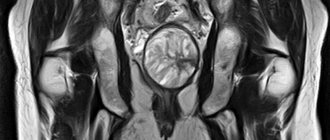How to correctly measure temperature with an electronic thermometer?
Simple rules that must be followed when measuring body temperature with an electronic thermometer
Measuring body temperature in the mouth
Temperatures begin to be measured orally (that is, in the mouth) from about 4 years of age, because a person must understand that there is no need to grab a thermometer with his teeth.
The tip of the thermometer should be placed in the sublingual area on the right or left and lightly held with the tongue. Your lips should be closed and you should breathe through your nose to avoid cooling the mouth - this is very important for the accuracy of the measurement.
After drinking cold and hot drinks (food), you need to wait 30 minutes and then take your temperature. It is not recommended to measure temperature in this way for children with increased nervous excitability or mentally ill people. It is not recommended to measure temperature in this way if you have a runny nose and adenoids. The measurement time for the oral measurement method varies from 10 seconds to 2 minutes. With this measurement method, a temperature in the range of 36.8-37.3 is considered normal.
Rectal temperature measurement
Typically, this measurement method is used when it is necessary to measure weakened patients, unconscious persons and infants.
Infants are placed on their tummy or back, raising their legs. It is most convenient for adults to measure on their side. The buttocks should be squeezed and held there until the end of the procedure.
Before insertion, the tip of the thermometer is lubricated with baby cream and inserted to a depth of 1-1.5 cm for children, 1.5-2 cm for adults.
Women also measure their temperature rectally, as mentioned above, to determine ovulation. In such cases, it is recommended to take measurements in the morning after waking up at the same time, without getting out of bed and to reduce physical activity to a minimum until the end of the measurement.
The measurement time in this way is 2-3 minutes. A rectal temperature of 37.3-37.7 is considered normal.
But there are also contraindications to this method of measurement. These are rectal fissures, diarrhea, rectal cancer.
Measuring armpit temperature
If you prefer to measure the temperature in the armpit, then the following conditions must be met to ensure accurate measurement:
- the armpit should be completely wet if you decide to measure this way.
— when measuring in the armpit, it is IMPORTANT that the arm is pressed tightly to the body. The slightest weakening of contact with the skin can lead to inaccurate measurements. And a premature signal. Manufacturers also recommend inserting the thermometer into the armpit not perpendicular to the body, but along it.
— the tip should be strictly in the armpit.
— for measurement accuracy, you can place the thermometer under your armpit in the off state and press it with your hand so that the tip heats up and after 30 seconds turn on the thermometer.
After the first beep, you must continue measuring. The measurement time varies on average 4-5 minutes.
The first beep does not mean that the measurements are completed, it means that the temperature measurement speed has decreased and now the temperature increase occurs more smoothly.
The body temperature value after the first beep is approximate and the measurement must be continued.
Body temperature measurement
About the article
8174
0
Regular issues of "RMZh" No. 29 dated December 25, 2008 p. 1948
Category: History of Medicine
Author: Vasilenko V.V.
For quotation:
Vasilenko V.V. Measuring body temperature. RMJ. 2008;29:1948.
“It seems to me that those sciences that are not generated by experience, father
any reliability, and do not end in visual experience, i.e. those sciences whose beginning, middle or end does not pass through any of the five senses" Leonardo da Vinci1
History of the issue A device for studying thermal processes, the thermoscope (the prototype of a liquid thermometer), was invented in 1603 by Galileo2, and Santorio3, having improved this instrument, in 1626 for the first time measured temperature in humans. He also invented a device for measuring pulse. Quantitative thermometry of objects became widespread starting in the mid-18th century. Fahrenheit4 made alcohol (1709) and mercury (1714) thermometers and proposed a temperature scale named after him. A little later, Celsius5 proposed another thermometric system. F. Martel6 (1742), inverting the Celsius scale (in which 0° meant the boiling point, and 100° the freezing point), proposed a thermometer, which became commonly used. The Fahrenheit scale, however, is still used in countries where the metric system of measures has not become the only one used7. Body thermometry (long-term, twice a day, with the construction of appropriate graphs), as a method for detecting and recognizing infectious and inflammatory processes, appeared in 1868 (according to other sources - in 1871) thanks to the work of the German physician Wunderlich (CRA Wunderlich ), at a time when theoretical principles that could confirm the role of specific pathogens in the development of specific diseases had not yet been formulated (this was done only in 1882 - the so-called “Koch8-Henle9 postulates”). Wunderlich published his observations of 25 thousand patients and established certain patterns. He gave a sound assessment of thermometry: “The method ... puts at the doctor’s disposal a phenomenon that depends on the total amount of organic changes in the body,” linking the occurrence of fever with the inflammatory process. External manifestations of inflammation, however, were postulated in ancient times by Celsus10: “The sure signs of inflammation are: redness and swelling with heat and pain11.” Galen12 added a fifth sign to this definition - “dysfunction” (functio laesa), he also gave the shortest definition of fever, calling it “unnatural heat”13. Thermometry of the human body is historically the first method of quantitative assessment of one of the vital parameters of the body using a special instrument. This was (if we recall the diagnostic capabilities of medicine at that time and in the next half century) very important for recognizing infectious diseases and infectious-inflammatory processes (endocarditis, pneumonia, rheumatism, etc.), and monitoring their course. Famous clinicians of the past, who used personal experience, intuition, thermometry and other indicators in diagnosis, gained a high reputation precisely due to the successful recognition of diseases occurring with fever. A clear example of their approach to a sick person can be the patient management sheets in Ostroumov’s clinic14 (see Appendix15). At that time, firstly, there was no general clinical blood test. Although the discovery of leukocytes dates back to the end of the 18th century, the real methodological development of the issue began in 1874, when Ehrlich16 mixed aniline dyes and stained a fixed blood smear with the resulting composition. Works of Mechnikov17 in the 80s of the 19th century. provided a scientific basis for understanding the significance of the dynamics of blood leukocytes in the process of inflammation. Blood cell staining was improved only in the last decade of the 19th century. – this stage is associated with the names of Giemsa18 and Romanovsky19. Secondly, there was no microbiological diagnostics. The causative agent of anthrax, for example, was discovered by Koch in 1876, and the tuberculosis bacillus - in 1882. The chronology of the discovery of representatives of the family of enterobacteriaceae, which play a critical role in human infectious pathology, is as follows. The causative agent of acute intestinal coliform infection was discovered in 1885 by Escherich20; the first representative of the Salmonella group was isolated in 1885 (Salmon21); plague stick - in 1894 by Yersin22 and Kitasato (Shibasaburo Kitasato); the causative agent of dysentery - in 1897 (Grigoriev23 and Shiga24). The causative agent of brucellosis was discovered in 1886 (Bruce25), and typhus - in 1910 (Ricketts26) - 1913 (Provacek27). Thirdly, there was no such powerful tool as x-ray diagnostics. Radiation was discovered by Roentgen28 in 1895; radiography as a medical method appeared already in the twentieth century. Fourthly, the treatment of infectious processes presented insurmountable difficulties. The recommendation of a contemporary of these discoveries, Bernard Shaw29: “Find the microbe and kill it”30 was then impossible to implement (about the treatment of tuberculosis in the first decade of the 20th century, you can get a relatively complete picture from Mann’s novel31 “The Magic Mountain”). The era of etiotropic treatment of bacterial infections began much later - with the use of Prontosil (red streptocide) in clinical practice by Domagk32 in 1934. Thermometry and thermometers The briefest definition of fever was given by Galen33; he called it “unnatural heat”34. The following can be taken as a modern definition that reflects the essence of the process: fever is a thermoregulatory increase in the temperature of the “core,” which represents an organized and coordinated response of the body to illness or other damage35. Fever is caused by exogenous and endogenous pyrogens (exo- and endotoxins). The homeostasis mechanisms of warm-blooded or homeothermic36 creatures maintain a stable temperature37 not of the entire body, but only of the internal organs. By measuring the actual temperature of the skin and mucous membranes, we get only an indirect idea of the “internal” temperature. An analogy with measuring blood pressure using the Korotkov method38 is appropriate here: we clinically estimate figures that are sufficiently consistent with real intra-arterial pressure39, but what is fundamental for the course of the pathological process is not the pressure in the main arteries, but the blood pressure in the terminal arterioles, which is only 20–30 mm Hg ( Sechenov40 called arterioles “faucets” of the cardiovascular system). Naturally, when assessing indicators, it is necessary to take into account such factors as the circadian rhythm (the maximum temperature is observed at 4–6 o’clock in the evening, the minimum at 3–4 o’clock in the morning), ovulation and menstruation in women, etc. Already Ibn Sina41 wrote: “To those who warm reasons include fairly strong and frequent movements, hot food, hot medicine, baths, warming up work, anger in any case, grief when it is not excessive.” Along with classic mercury thermometers, alcohol thermometers, infrared and other digital portable devices have become widespread in our time. According to modern concepts, it is advisable to carry out measurements in adults in the oral cavity under the tongue with a mercury thermometer for 3 minutes. In Russia, axillary thermometry (skin in the armpit) is still most widely used. It must be said that with oral thermometry, artifacts can occur: with rapid breathing (more than 20 breaths per minute), incorrect placement of the thermometer relative to the tongue, artificially induced fever. A way to detect malingering has been proposed - to simultaneously measure oral (or axillary) temperature and urine temperature, which should be approximately the same. Nowadays, the clinical significance of dynamic thermometry has decreased, however, in all medical hospitals, daily temperature measurements are taken twice a day. Evaluation of results Wunderlich established the following criteria for body temperature: temperature less than 36.6 - subnormal, from 36.6 to 37.4 - normal, from 37.5 to 38 - subfebrile, above 38 - febrile (febrile), above 39.5 - “high” fever, above 42°C – hyperpyrexia. It then became common to combine the concepts of “subnormal” and “normal” temperature - the norm is from 35.8 to 37.4°. This division has been preserved to this day, although in domestic medical textbooks there is an annoying inaccuracy42, which continues from book to book: the designation of the boundaries of subfebrile condition as 37–38°. This, as practice shows, causes a lot of problems both for people who independently measure their body temperature and for their doctors. Liebermeister's rule43 connects the magnitude of the increase in body temperature and the increase in pulse rate in febrile patients as follows: an increase in temperature by 1° leads to an increase in heart rate by an average of 8 beats per minute. Some intracellular organisms can cause fever with bradycardia, i.e. There is a dissociation of body temperature and pulse. For the first time, relative or true bradycardia at high body temperature was noted by Fage44 in the second period of yellow fever. The presence of Faget's sign or insufficient decrease in rectal temperature after 15 minutes in a cool bath (Baruch's sign45) was considered characteristic of typhoid fever. Fage's symptom is also observed in legionellosis and mycoplasma pneumonia, tularemia, brucellosis, and Colorado tick fever. In some infectious diseases (brucellosis, tuberculosis, including its extrapulmonary localizations), an increase in body temperature can only occur during physical activity; during rest, the temperature returns to normal. Critical fever (above 41°) can be caused by both neuroinfection and non-infectious factors, especially in old age: stroke, withdrawal of sedatives, neuroleptic malignant syndrome, both isolated and as part of a neuroleptic symptom complex (Deley syndrome46–Deniker47). At high ambient temperatures, critical fever involves heat stroke as a result of impaired heat transfer. Based on the nature of the temperature curve, it is proposed to distinguish several types of fever. Of these, the most significant diagnostically are: constant, intermittent (intermittent and its special form - debilitating, hectic, or septic), recurrent (recurrent), undulating (undulating), irregular (atypical). Remitting fever has no differential diagnostic value; it is nonspecific. Let's note some forms. A short, mild fever with two peaks in a week suggests a viral illness (particularly dengue fever or West Nile fever). Prolonged low fever (up to 38°) with episodes of more significant increases in temperature is observed with giant cell arteritis (Horton's disease48, or Horton-Magath49-Brown syndrome50). A moderate, persistent fever with a daily peak of approximately 38.3° is characteristic of sarcoidosis and tuberculosis. An interesting observation was made in the 19th century by Lucatello: with hyperthyroidism, the axillary temperature is constantly higher than the oral one. Single rises in temperature during the day, referred to as (intermittent) daily fever, suggest a biliary source, such as acute cholangitis or liver abscess. Rise in temperature twice a day (double daily fever) is considered characteristic of gonococcal endocarditis. Recurrent fevers include Ixodid tick-borne borreliosis (Lyme disease51). The (incorrect) hepatalgic Charcot fever is known52 - unpredictable rises in temperature followed by a decrease, which occurs when valve blockage of the common bile duct is caused by a stone, which provokes intermittent cholangitis. In Hodgkin's disease53, undulating Pel fever54–Ebstein55 may occur: elevated body temperature for 8–10 days is followed by a 10–14-day fever-free period. With Felty's disease, the fever-free period is approximately three weeks. The correct interpretation of a prolonged increase in temperature can be considered as a test of a doctor’s analytical and synthetic thinking, since the ability to correctly assess its nature requires a broad medical outlook56. Hypothermia Hypothermia - body temperature 35.8° and below - is observed in chronic patients during decompensation of major pathological processes, such as cardiac, respiratory and renal, diabetes, hypothyroidism, Addison's disease57. Hypothermia can also be caused by an overdose of certain medications. Hypothermia due to physical cooling occurs even in summer.
1 Leonardo da Vinci (1452–1519) – Italian scientist and artist 2 Galileo Galilei (1564–1642) – Italian scientist, one of the founders of natural science 3 Santorio (1561–1636) – Italian doctor, physiologist and anatomist. 4 GD Fahrenheit (1686–1736) – German physicist 5 A. Celsius (1701–1744) – Swedish physicist, meteorologist and astronomer 6 Cited. HELL. Ado 7 The number of degrees on a Celsius thermometer (C) is equal to C=5/9•(F–32), where the letter F indicates the number of degrees Fahrenheit 8 R. Koch (1843–1910) - German bacteriologist; awarded for research and discoveries concerning the treatment of tuberculosis, the Nobel Prize in Physiology or Medicine in 1905 9 FGJ Henle (1809–1885) - German morphologist 10 Aulus Cornelius Celsus, 1st century. BC, ancient Roman encyclopedist and doctor. For the purity and elegance of his language, he was called “Cicero among doctors” 11 Rubor, tumor, calor, dolor 12 Claudius Galenus (c. 130 - c. 200) - ancient Roman doctor. 13 Calor practer naturalis 14 A.A. Ostroumov (1844/45–1908) – Russian therapist, founder of the scientific school 15 Clinical lectures by Professor A.A. Ostroumova 1893–1894 Moscow. Printing house M.G. Volchaninova. 1895 16 P. Ehrlich (1854–1915) - German bacteriologist and immunologist; awarded the Nobel Prize in Physiology or Medicine in 1908 for his work on the theory of immunity. 17 I.I. Mechnikov (1845–1916) – Russian biologist and pathologist; awarded the Nobel Prize in Physiology or Medicine in 1908 for his work on the theory of immunity. 18 G. Giemsa (1867–1948) – German chemist and bacteriologist 19 D.L. Romanovsky (1861–1921) – Russian doctor 20 Th. Escherich (1857–1911) – German pediatrician 21 D.E. Salmon (1850–1914) – American pathologist 22 AJ E. Yersin (1863–1943) – French bacteriologist 23 A.V. Grigoriev (1860–1916) – Russian forensic physician and microbiologist 24 K. Shiga (1870–1957) – Japanese doctor and bacteriologist 25 D. Bruce (1855–1931) – English military doctor 26 N.T. Ricketts (1871–1910) – American physician 27 SJM Prowazek (1876–1915) – Czech microbiologist 28 WC Roentgen (1845–1923) – German experimental physicist - tator; first Nobel Prize winner in physics (1901) 29 GB Shaw (1856–1950) - Irish and English writer 30 Quoted. CM. Navashina 31 Th. Mann (1875–1955) – German writer; awarded the Nobel Prize for Literature in 1929. 32 G. Domagk (1895–1964) – German scientist; awarded the Nobel Prize in Physiology and Medicine in 1939 for the discovery of the antibacterial properties of prontosil. 33 Galenus (c. 130 - c. 200) - ancient Roman physician 34 Calor practer naturalis 35 Laurin M.I. Fever in children. Per. from English M.: Medicine, 1985; 255 36 From the Greek words homoios - similar, identical and therme - heat 37 Temperature (from Latin temperatura - proper mixing, normal state) - an indicator of the thermal state of the body; reflects the relationship between the processes of heat production of the body and its heat exchange with the environment 38 N.S. Korotkov (1874–1920) - Russian surgeon 39 With some underestimation of systolic and overestimation of diastolic blood pressure 40 I.M. Sechenov (1829–1905) – Russian scientist, creator of the physiological school 41 Abu Ali Hussein Abdallah Ibn Sina (980–1037) – Central Asian doctor and scientist 42 See, for example: A.L. Grebenev. “Body thermometry” in the textbook for medical universities “Propaedeutics of Internal Diseases”. M.: Medicine, 1974, p. 52 43 K. Liebermeister (1833–1901) – German doctor 44 J.Ch. Faget (1818–1884) – French doctor 45 Simon Baruch (1848–1921) – American surgeon and hydrotherapist 46 JPL Delay (1907) – French doctor 47 P. Deniker (1917) – French neurologist and psychiatrist 48 V.T. Horton (born 1895) - American doctor 49 T.V. Magath, modern American physician 50 G.E. Brown (1885–1935) - American physician 51 First described in 1975 as a local outbreak of arthritis in Lyme, Connecticut, USA 52 J.M. Charcot (1825–1893) – French neurologist 53 Th. Hodgkin (1798–1866) - English doctor 54 P.K. Pel (1852–1919) – Dutch doctor 55 W. Ebstein (1836–1912) – German doctor 56 N.V. Elshtein. Errors in gastroenterological practice. – M.: Medical Information Agency, 1998. – 224 p. 57 Th. Addison (1793–1860) – English physician
How to measure correctly
In different cavities and areas, the temperature indicator is measured according to certain rules. It is important to check the technical condition of the device you are using - replace the battery in the digital thermometer if necessary, adjust the infrared thermometer, and make sure the mercury thermometer is intact. If you have doubts about the reliability of the results obtained - for example, the child’s forehead is hot, but the device shows normal temperature, repeat the procedure or measure the indicator on another part of the body.

- What documents are needed to sell an apartment?
- Fluimucil-antibiotic IT for inhalation
- Neutrophils are low in the blood of adults and children. Causes, treatment and degrees of neutropenia
Mercury thermometer
Before using a mercury thermometer, shake it to bring down the mercury column to the minimum value on the scale, less than 35 °C. The device must be dry and clean; if you measure orally or rectally, a prerequisite for using the thermometer is its preliminary disinfection. For glass thermometers, to avoid damage, there are rules for careful storage in a case.
When performing the procedure in the armpit, the device is kept in a state of balance, pressed tightly to the body for the required time. For oral measurement, the device is placed under the tongue, it closes tightly, and breathing is done through the nose. During the rectal method of measurement, the patient is placed in a lying position on his side, the thermometer is inserted through the sphincter into the rectum and held for two to three minutes.
Time to measure body temperature with a mercury thermometer
When using contact thermometers, the type of which is mercury, the time during which the measurement is carried out is important. Depending on the measurement location, it is:
- 5-10 minutes - for the axillary method;
- 2-3 minutes - for rectal;
- 3-5 minutes - for oral.
Electric thermometer
Digital measuring instruments must be used when you want accurate and fast results. The sound signal function, which is equipped with electric thermometers, makes it easier to monitor the temperature measurement, since it notifies the user when the measurement process is completed. They produce so-called instant thermometers, which, thanks to the high sensitivity of the thermoelement, give results in 2-3 seconds.
Remote temperature measurement
Measuring temperature readings from a distance is a convenient feature of infrared thermometers. These devices are the result of high-tech laboratory developments, which determines the quality of their work and the accuracy of the data obtained. They do not have a harmful effect on the body, and are suitable for both immobile patients and infants who are in constant motion.











